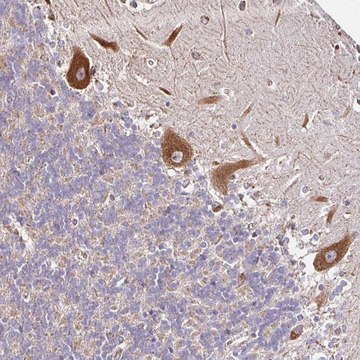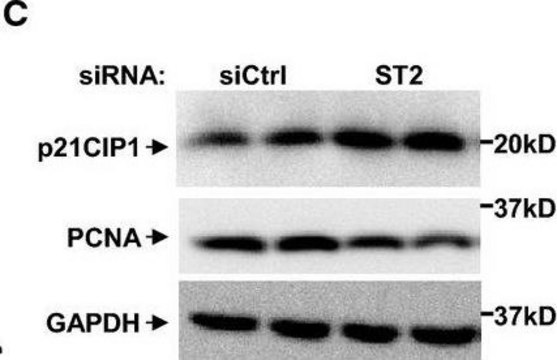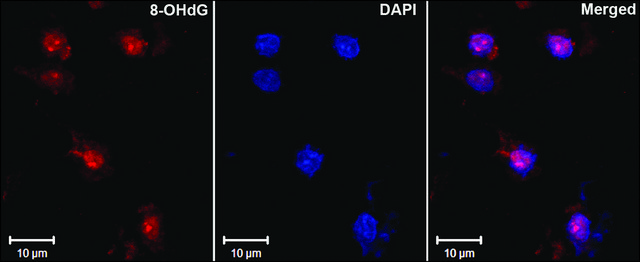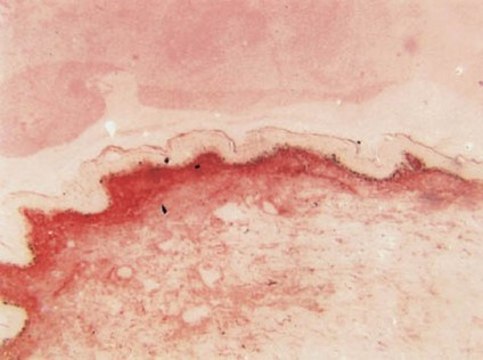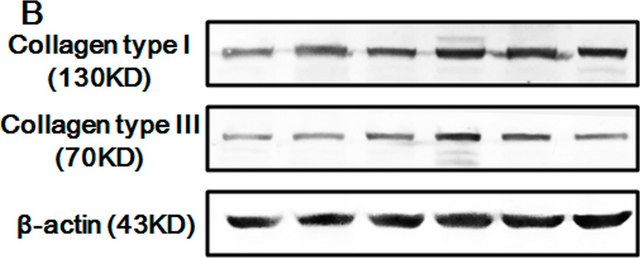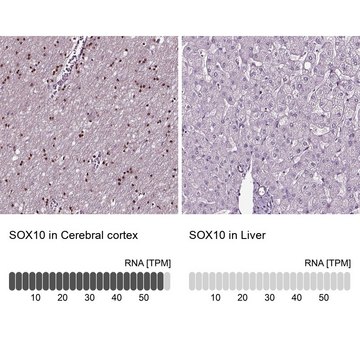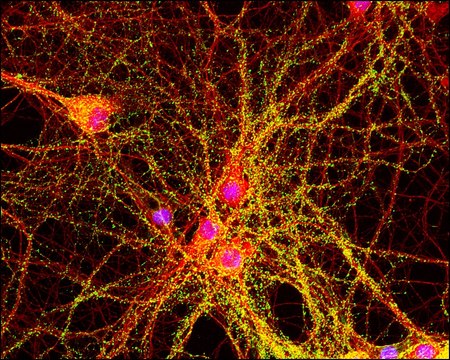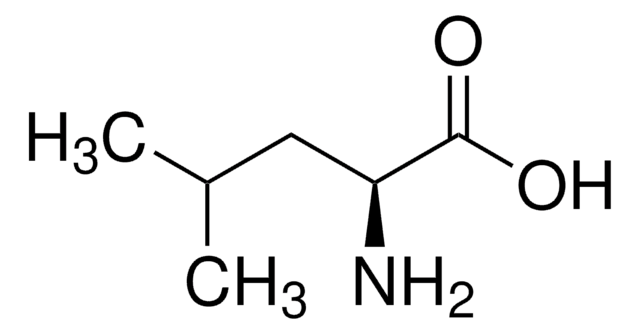T1192
Anti-Thymine Dimer antibody, Mouse monoclonal
clone H3, purified from hybridoma cell culture
Sign Into View Organizational & Contract Pricing
All Photos(1)
Recommended Products
biological source
mouse
Quality Level
conjugate
unconjugated
antibody form
purified immunoglobulin
antibody product type
primary antibodies
clone
H3, monoclonal
form
buffered aqueous solution
species reactivity
chicken, wide range
packaging
antibody small pack of 25 μL
concentration
~2 mg/mL
technique(s)
capture ELISA: suitable
dot blot: 0.5-1 μg/mL
immunocytochemistry: suitable
isotype
IgG1
shipped in
dry ice
storage temp.
−20°C
target post-translational modification
unmodified
General description
UV light induces the formation of thymine dimers that subsequently leads to DNA damage in cells. Monoclonal antibodies that bind to thymine dimers enable the study of cell death and UV-induced DNA damage during photocarcinogenesis . Monoclonal Anti-Thymine Dimer binds to the (5′-6′) cyclobutane type of homothymine or thyminecytosine heterodimers in single-stranded DNA. The antibody has a decreased affinity for the dimer in short oligonucleotides (an oligonucleotide of atleast 10-20 thymine residues is required for the labeling of the probes). The product facilitates the use of a sensitive and non-radioactive technique for the analysis of thymine dimerization.
Immunogen
tetra nucleotide containing cyclobutane thymine dimer (GTTG) conjugated to chicken gamma globulin.
Application
May be used in Southern blotting at 0.5-1μg/mL using UV induced thymine dimers of λ phage DNA fragments.
Monoclonal Anti-Thymine Dimer antibody is suitable for use in dot blot (0.5-1 mg/mL), immunocytochemistry (1:100) and capture ELISA.
Physical form
Solution in 0.01 M phosphate buffered saline, pH 7.4, containing 15 mM sodium azide.
Other Notes
Distributed under license.
Patents WO87/01134, EP 0233 177 B1
Patents WO87/01134, EP 0233 177 B1
Disclaimer
Unless otherwise stated in our catalog or other company documentation accompanying the product(s), our products are intended for research use only and are not to be used for any other purpose, which includes but is not limited to, unauthorized commercial uses, in vitro diagnostic uses, ex vivo or in vivo therapeutic uses or any type of consumption or application to humans or animals.
WGK
WGK 2
Flash Point(F)
Not applicable
Flash Point(C)
Not applicable
Regulatory Information
常规特殊物品
Certificates of Analysis (COA)
Search for Certificates of Analysis (COA) by entering the products Lot/Batch Number. Lot and Batch Numbers can be found on a product’s label following the words ‘Lot’ or ‘Batch’.
Already Own This Product?
Find documentation for the products that you have recently purchased in the Document Library.
Tirzah J Weiss et al.
Pigment cell & melanoma research, 36(1), 6-18 (2022-09-24)
Melanin is a free-radical scavenger, antioxidant, and broadband absorber of ultraviolet (UV) radiation which protects the skin from environmental carcinogenesis. However, melanin synthesis and UV-induced reactive melanin species are also implicated in melanocyte genotoxicity. Here, we attempted to reconcile these
Kimberly N Herman et al.
Environmental and molecular mutagenesis, 55(5), 375-384 (2014-02-20)
DNA polymerase η (pol η), of the Y-family, is well known for its in vitro DNA lesion bypass ability. The most well-characterized lesion bypassed by this polymerase is the cyclobutane pyrimidine dimer (CPD) caused by ultraviolet (UV) light. Historically, cellular
Minimal, superficial DNA damage in human skin from filtered far-ultraviolet C.
R P Hickerson et al.
The British journal of dermatology, 184(6), 1197-1199 (2021-01-17)
Blake Ferguson et al.
eLife, 8 (2019-01-27)
Genetic variation conferring resistance and susceptibility to carcinogen-induced tumorigenesis is frequently studied in mice. We have now turned this idea to melanoma using the collaborative cross (CC), a resource of mouse strains designed to discover genes for complex diseases. We
Detection of cyclobutane thymine dimers in DNA of human cells with monoclonal antibodies raised against a thymine dimer-containing tetranucleotide.
L Roza et al.
Photochemistry and photobiology, 48(5), 627-633 (1988-11-01)
Our team of scientists has experience in all areas of research including Life Science, Material Science, Chemical Synthesis, Chromatography, Analytical and many others.
Contact Technical Service
